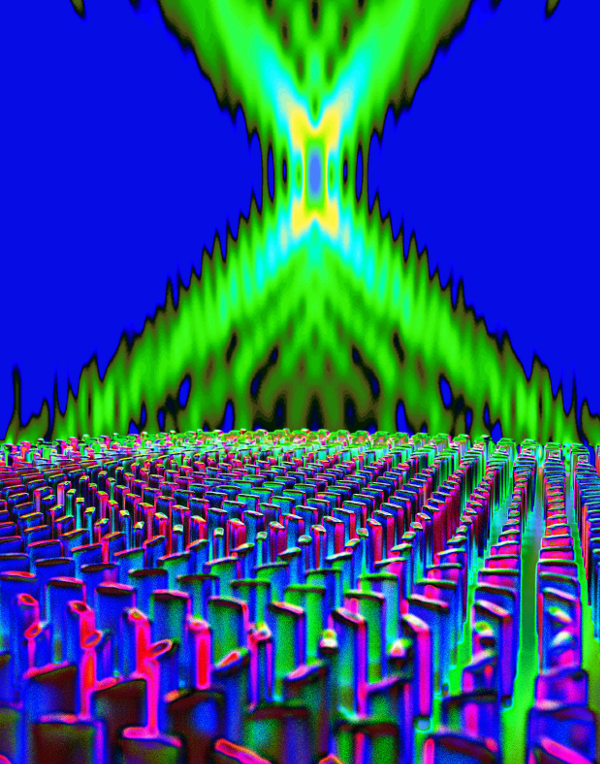Metalens made for full spectrum
 Harvard engineers have created a single lens that can focus the entire visible spectrum of light — including white light — in the same spot and in high resolution.
Harvard engineers have created a single lens that can focus the entire visible spectrum of light — including white light — in the same spot and in high resolution.
Focusing the entire spectrum is challenging because each wavelength moves through materials at different speeds. For example, red wavelengths move through glass faster than blue, so the two colours will reach the same location at different times, resulting in different foci. This creates image distortions known as chromatic aberrations.
Cameras and optical instruments use multiple curved lenses of different thicknesses and materials to correct these aberrations, but this adds to the bulk of the device.
‘Metalenses’ are flat surfaces that use nanostructures to focus light, which could one day replace the bulky, curved lenses currently used in optical devices.
However, metalenses have been limited in the spectrum of light they can effectively focus.
Now a team of researchers at Harvard have developed the first single lens that can focus the entire visible spectrum of light. The research is published in Nature Nanotechnology.
“Metalenses have advantages over traditional lenses,” says senior author Federico Capasso.
“Metalenses are thin, easy to fabricate and cost effective. This breakthrough extends those advantages across the whole visible range of light. This is the next big step.”
The metalenses developed by Capasso and his team use arrays of titanium dioxide nanofins to equally focus wavelengths of light and eliminate chromatic aberration.
The researchers created units of paired nanofins that control the speed of different wavelengths of light simultaneously. The paired nanofins control the refractive index on the metasurface and are tuned to result in different time delays for the light passing through different fins, ensuring that all wavelengths reach the focal spot at the same time.
“One of the biggest challenges in designing an achromatic broadband lens is making sure that the outgoing wavelengths from all the different points of the metalens arrive at the focal point at the same time,” said researcher Wei Ting Chen.
“By combining two nanofins into one element, we can tune the speed of light in the nanostructured material, to ensure that all wavelengths in the visible are focused in the same spot, using a single metalens. This dramatically reduces thickness and design complexity compared to composite standard achromatic lenses.”
“Using our achromatic lens, we are able to perform high quality, white light imaging. This brings us one step closer to the goal of incorporating them into common optical devices such as cameras,” said Alexander Zhu, co-author of the study.
The researchers are now working to scale up the lens to about 1 cm in diameter, which could itself open a host of new possibilities, such as applications in virtual and augmented reality.








 Print
Print